Art & Exhibitions
A New Show in Honolulu Will Dip Into the Colorful History of the Hawaiian Shirt
"Fashioning Aloha" brings together 53 garments to trace the evolution of alohawear.
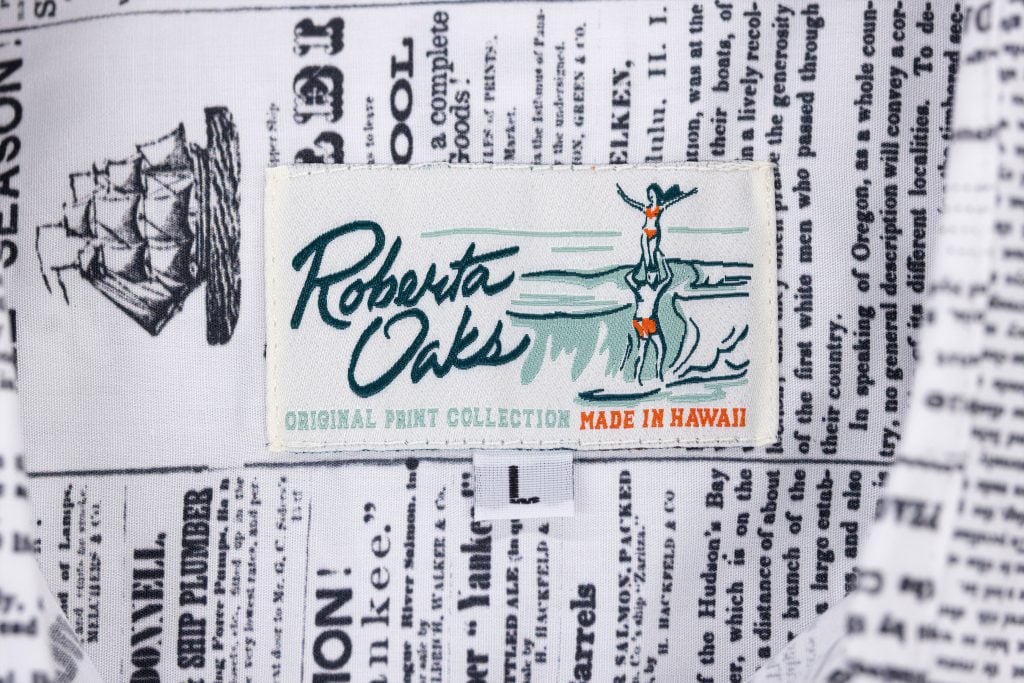
Dozens of Hawaiian shirts and other clothing will go on display at the Honolulu Museum of Art (HOMA) to celebrate the history of alohawear and its rise through pop culture.
The exhibition, titled “Fashioning Aloha,” explores how printed clothing in Hawaii has developed since the 1930s. The show was organized by Tory Laitila, the museum’s curator of textiles and historic arts of Hawaii, after HOMA acquired the collection of Hawaiian fashion amassed by Linda Arthur Bradley, professor of historic costume at the University of Hawaii at Manoa. Laitila’s predecessors have curated some shows on board shorts and lauhala hats in the past, and he wanted to add to the representation of what people in Hawaii wear.
“To create an exhibition around alohawear can be problematic because the aloha shirt has an interesting history. We don’t really know who created it but it does come from the 1930s when tailors were creating colorful shirts from imported fabric,” Laitila said. “And it was very fashionable to attach the word ‘aloha’ to something.”
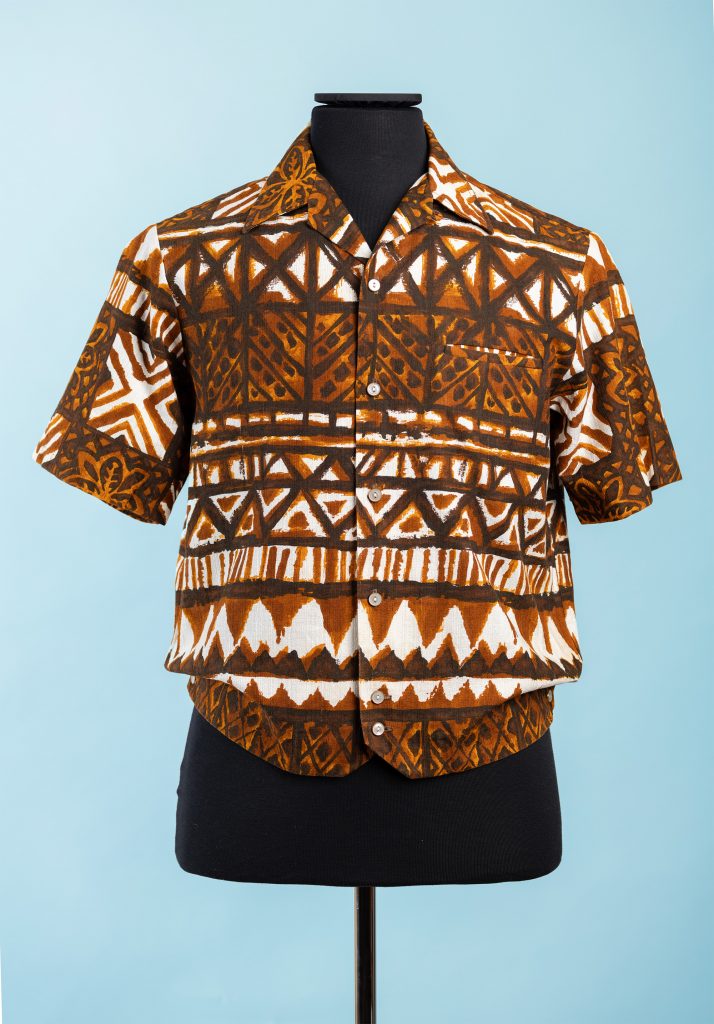
A “Hapa Jac” shirt from Iolani Fashion, designed around 1968. Photo courtesy of Honolulu Museum of Art.
Emerging in the 1930s, the early Hawaiian shirts bore Japanese influences from their motifs to materials. They grew so popular with tourists that local women were making them to sell at church bazaars, as they swiftly became cultural symbols and choice leisure wear (see: Elvis Presley’s get-up in 1961’s Blue Hawaii). Other alohawear—such as the holokū, the mu‘umu‘u, and the holomu’u—predate the Hawaiian shirt, their history recorded as far back as the 1820s with the arrival of American protestant missionaries.
In the 1970s, as the Hawaiian Renaissance saw renewed interest in the islands’ culture, designers of the Hawaiian shirt began experimenting with new patterns, referencing quilting and hula, and different fits (see: then-Honolulu mayor Frank Fasi’s long-sleeved Hawaiian shirt). Today, the shirt continues to be readily reimagined by local designers as much as luxury houses.
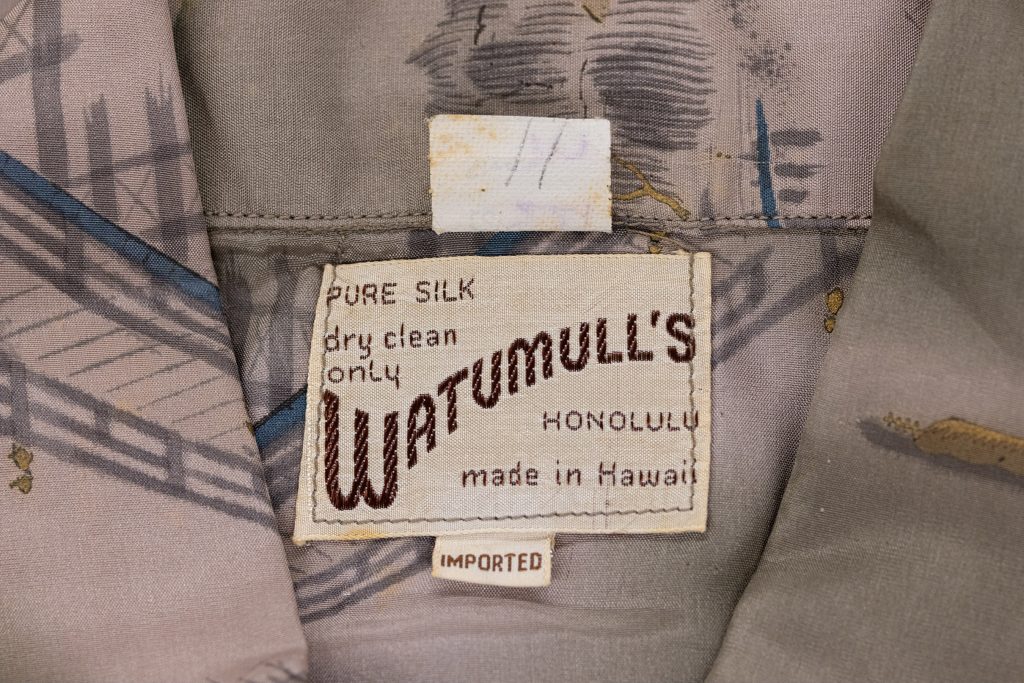
Detail of brand label from garment on view in “Fashioning Aloha.” Courtesy of the Honolulu Museum of Art.
The 53 garments in “Fashioning Aloha,” and accompanying items such as paintings and prints, will be broken down into six sections across thematic groups: flowers, bark cloth, Asian motifs, location, Hawaiian quilts, music, hula and the Hawaiian kingdom.
The garments in the show feature works from the museum’s collection and those on loan, exhibited to reflect their similar patterns. For example, Laitila will pair a mu‘umu‘u with a printed motif of crowns and lei with a quilt in the collection printed with that same design. Some of the earliest Hawaiian motifs by designer Elsie Daws will also be on view alongside contemporary reinterpretations by today’s creators such as Kenneth Aloha Victor, who runs the label Kaulua’e.
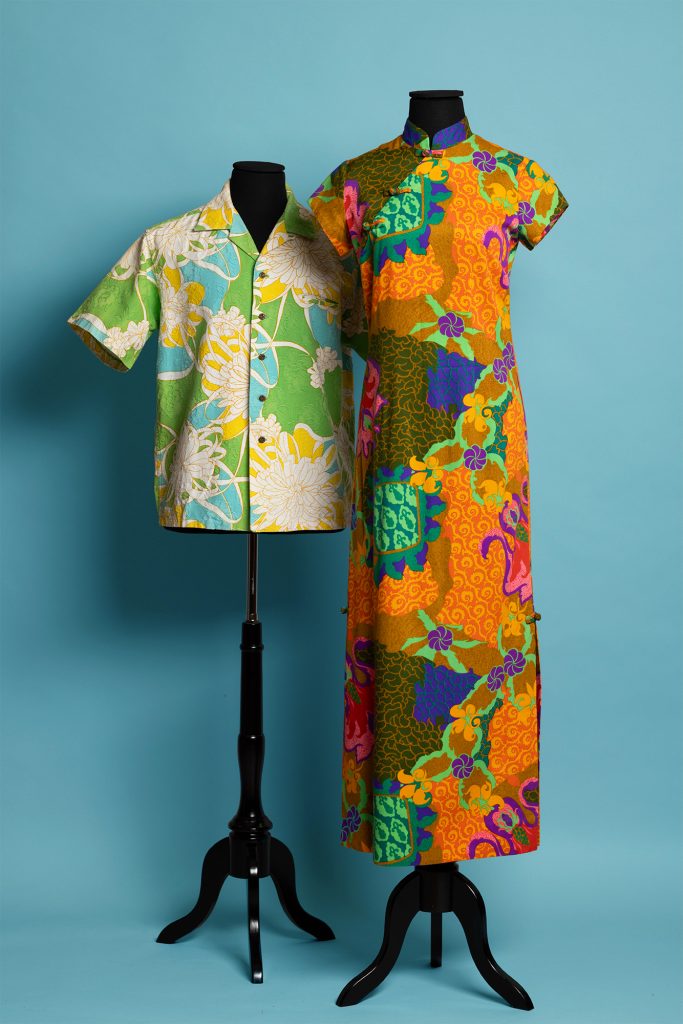
A 1960s aloha shirt from the Kamehameha Garment Company and a Waltah Clarke’s Chinese Muʻumuʻu from 1969–70. Photo courtesy of Honolulu Museum of Art.
Also surfacing in the show is the visual language of Hawaiian shirts, which are often printed with designs bearing cultural significance that is often imperceptible to outsiders. For one, Laitila is eager to highlight the difference between a Hawaiian shirt and an aloha shirt. While those terms are often used interchangeably, they hold different meanings.
“The aloha shirt is sourced in or for Hawaii,” he stressed. “It’s also how you wear it. Is it just a colorful shirt from somewhere else?”
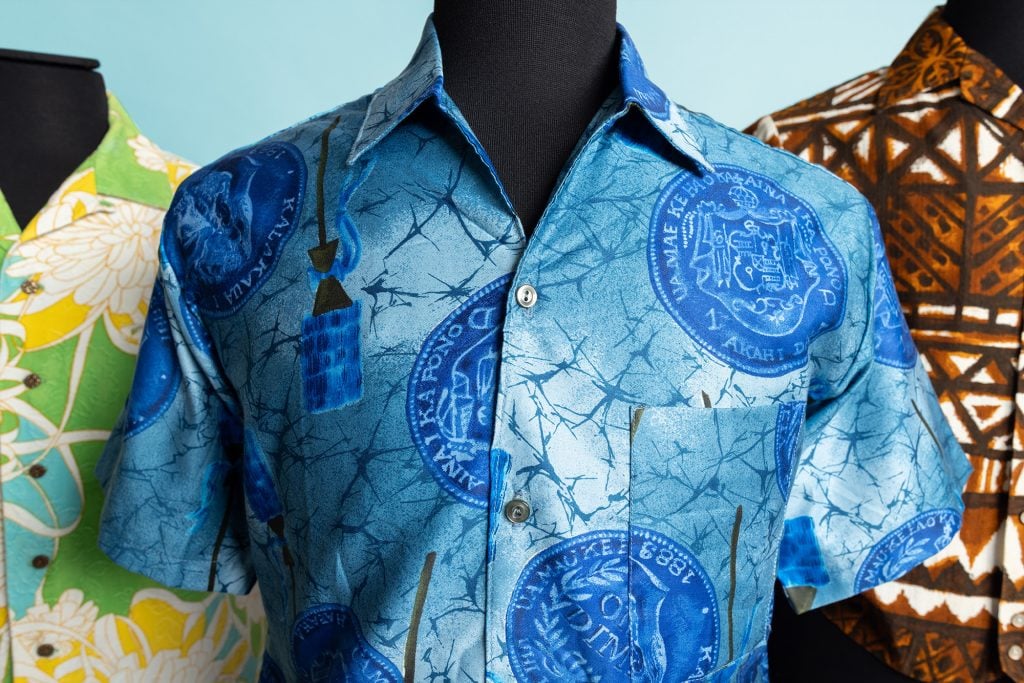
A Liberty House aloha jacket from the 1970s. Photo courtesy of Honolulu Museum of Art.
As for the values of the items in the collection, some of the more vintage items can be worth as much as a few thousand dollars—but otherwise their value is more personal or cultural.
“I’m trying to keep it light, fun and nostalgic,” said Laitila, who was wearing an aloha shirt celebrating Japanese tokutatsu during the interview. “My hope is for visitors to go, ‘That’s in our closet at home’ or ‘I want that for my closet.’”
“Fashioning Aloha” is on view at the Honolulu Museum of Art, 900 South Beretania Street, Honolulu, Hawaii from April 12 through September 1.





